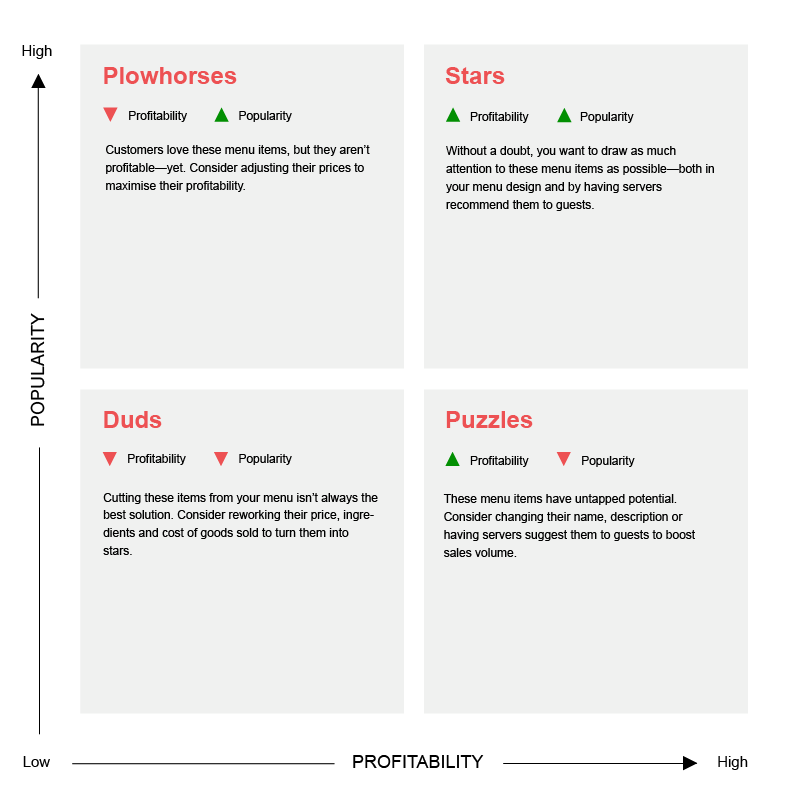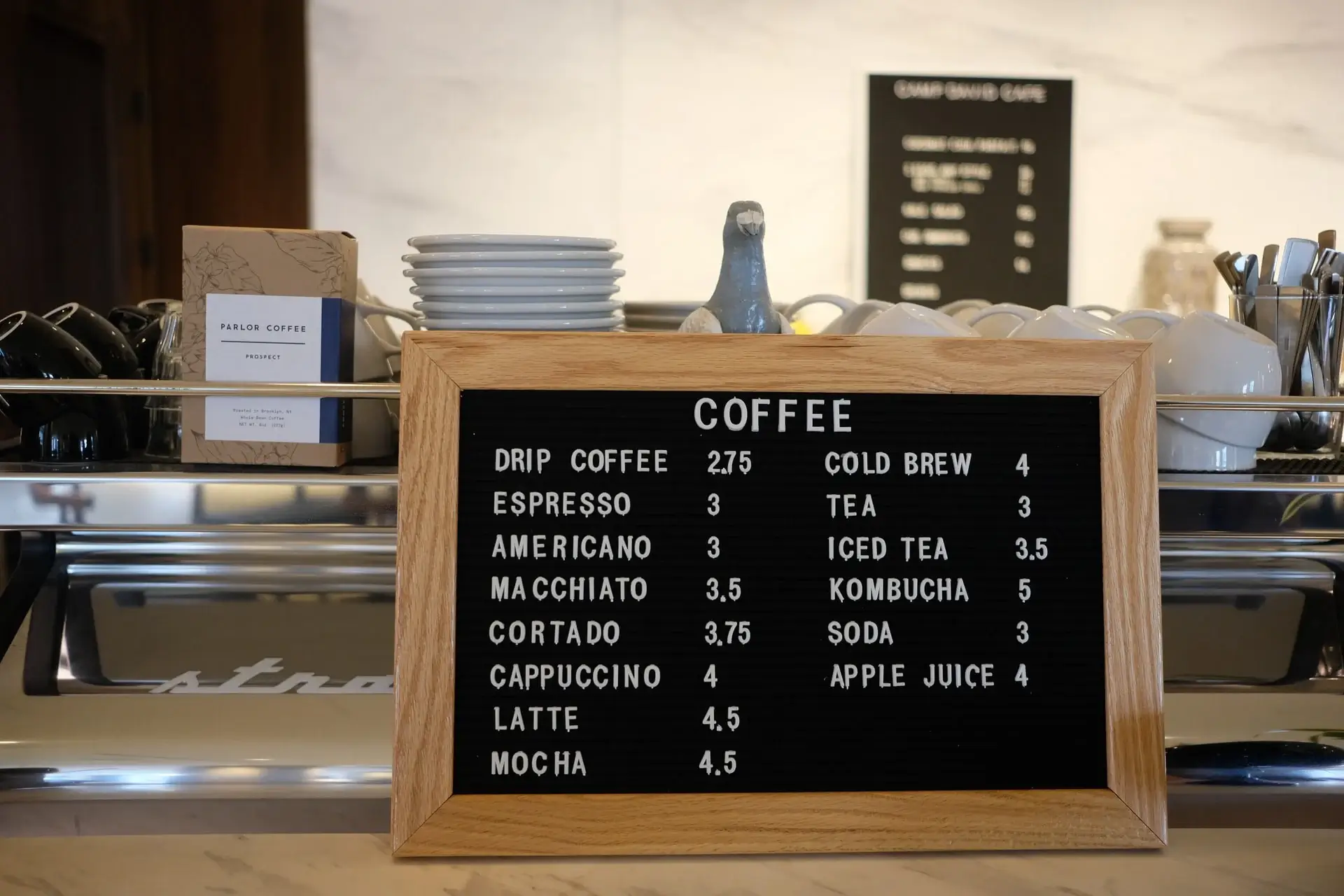Your restaurant’s menu is one of the most powerful tools you have to improve your restaurant’s profits.
The popularity and cost of each item on the menu has a direct impact on how much revenue your restaurant can bring in, and on whether your patrons will enjoy their dining experiences and keep coming back.
Thankfully, modern cloud point of sale systems and cloud software have made it easier than ever to analyze which parts of your menu are profitable and which parts need work, then test how improvements affect that profitability over time.
Here’s how restaurateurs can use modern restaurant software — which often incorporates POS, inventory management, accounting, and more — to optimize menu profitability.
Analyze Food and Ingredient Costs
The first step in analyzing menu profitability is to get a firm understanding of what your restaurant is spending on food. That requires calculating your Cost of Goods Sold.
As we wrote in our post Bookkeeping 101 for Restaurateurs, CoGS refers to the costs of producing the food and drink served to your customers in a given time period.
You can calculate it by totaling the cost of your existing food inventory and the cost of any inventory purchases during the specified time period, then subtracting the cost of the inventory you have left at the end of the period.
The good news is that if you’re using a cloud-based POS for system restaurants like Touchbistro or Lightspeed Restaurant, these calculations happen automatically. Assessing them is as simple as checking your software reports.
The analytics section of your software will show how much you’ve spent on each type of food, drink, and ingredient for any given time period.
However, you should keep in mind that these costs need to be revisited regularly to account for how food products change in price throughout the year. (A highly profitable menu item in the summer might not also be profitable in the winter, for example.)
In general, at a profitable restaurant, the food costs won’t be too much more than 30% of the restaurant’s total sales. But if you want to improve that ratio, you’ll have to drill down further to analyze the profitability of each dish on the menu.
Calculate Menu Item Profitability
As we’ve mentioned, your software’s inventory features should automatically calculate how much money your restaurant spends on food inventory.
But all of the best POS programs for restaurants can also calculate the food cost for each item on your menu.
Software users can group ingredients together to create menu items, and the software program will calculate the “plate cost” or “recipe cost.”
In fact, this need is so common that some software programs exist that are dedicated specifically to recipe costing.
Calculating the full cost of a menu item may also include calculating the labor cost for that dish or drink, or adding in other ancillary costs, such as a napkin for a cocktail or the dishes for the meal. Some meals are certainly more labor-intensive than others, or demand more specialized cutlery or serving ware, and that might factor into the profitability of each dish. Many POS systems can also track these costs.
Once you have the total plate cost for each menu item, it becomes much clearer which plates are profitable and which are losing money for the restaurant.
Some POS systems, including MarketMan, will actually alert users to unprofitable menu items (instead of waiting for users to find that information themselves).
Of course, losing a little money on some of the menu items might still be a good strategic move if it brings more customers into the restaurant or paves the way for diners to spend more during their visit. For that reason, this article on the Lightspeed Restaurant blog suggests analyzing the popularity of your menu dishes, as well, and grouping dishes in the following way:

Image Source: Lightspeed Restaurant
Troubleshoot Menu Profitability
As the infographic above begins to explain, you have plenty of options when it comes to optimizing the profitability of individual menu items. Here are a few of them:
- Try adjusting the price. Slight tweaks to an item’s price, either up or down, can have a big effect on its profitability and popularity.
- Decrease food costs as much as reasonably possible without sacrificing quality. You can change the menu throughout the year to take advantage of in-season produce, for example, or make sure you’re getting the best deals from your distributors by shopping around and buying in bulk when possible.
Reduce the portion sizes. Ask servers whether any dishes are being returned to the kitchen with food left behind. Making the meal smaller may boost profitability. - Try grouping different products together into meals or make them part of special dining experiences. Adding a drink or a side item to the total cost of an entree or reserving certain meals for a specialty menu just might change your customers’ perceived value of what they order.
- Remove the item from the menu. If a certain dish isn’t working despite multiple tweaks, it’s time to remove the item from the menu completely.
As you make changes to each menu item’s price and ingredients, you can keep using your cloud POS system’s analytics tools to see whether or not the changes paid off or affected its popularity. If your restaurant has multiple locations, you can even compare menu success from one location to the next within your POS reports to see how regional differences affect the success of various types of dishes.
Once you’ve figured out which menu items are the most profitable, it’s time to promote them as much as you can on your physical menu – or digital menu or website if you’re focused on online ordering. Modern POS systems make it easy to present your dishes in a beautiful way online and just as easy for customers to check out.
Ready to Leverage the Power of a Modern POS?
Menu optimization is just one of many jobs that modern restaurant software can handle quickly and accurately.
Today’s cloud-based software is powerful, but getting it all up and running can be a very distracting task for restaurant owners. In most cases, restaurants benefit from using several types of programs (POS, accounting, marketing, HR scheduling, etc.) and integrating them together to build a comprehensive system. Getting these systems online takes careful research and onboarding time.
Today’s cloud-based software is powerful, but getting it all up and running can be a very distracting task for restaurant owners.
At Cloudscape Technologies, our Dubai-based expert staff is certified in all of the best cloud-based software on the market. By working closely with restaurant owners to understand their unique needs, we can help recommend the best comprehensive software solutions. We even help set up your accounts and offer a Care Package complete with training for new staffers and responsive support for your implementation.
To learn more, contact us at Cloudscape Technologies today.






